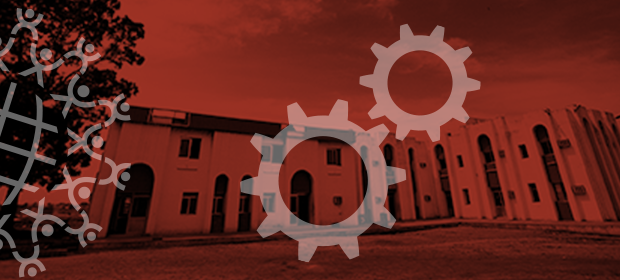Where We Work
See our interactive map


The word resilience is on the upswing. It was used more in 2015 than ever before. It even appears in two of the Sustainable Development Goals (SDGs). SDG 9 refers to “resilient infrastructure,” and SDG 11 to making cities and human settlements resilient.
Now resilience is being used to describe a desirable state for health systems. But why should countries invest in creating resilient health systems? Is there a return on investment in resilience?
Good health systems can provide accessible, high-quality services in times of stability and in times of crisis. These are usually found in places where there are systems in place to regularly collect and monitor data—such as from health management information systems, human resources information systems, and client experience surveys—and to use those data to constantly adjust investments to target weak areas. In places where these systems are weak, health systems are more likely to be fragile, and can be overwhelmed by a major disruptive event. And countries are more likely to become fragile after a conflict, a natural disaster, or—as we have seen with Ebola—after a major disease outbreak.
Fragility can spreadFragile states lack the ability to carry out basic governance functions, which results in an absence of essential services to the population. But not all fragile states have the same level of fragility—some may be deteriorating, collapsed, recovered from conflict, or in early recovery. Those on the more extreme end of fragility will have health systems that collapse under any strain and are the most vulnerable to absolute failure. In short, they are not resilient.
The outbreak has highlighted another critical problem: that of global resilience. It is only as strong as its weakest link.
In Liberia, Guinea, and Sierra Leone, Ebola tested health systems that were in a phase of recovery from lengthy conflicts and fragile from underinvestment, and the effects have been devastating to all. More than 11,000 lives were lost, including more than 500 health workers who were battling the disease, and the global response came at a cost of more than $3.5 billion.
These health systems did not have adequate alert systems for early detection and management of the epidemic, and health workers were not trained or equipped to work effectively. But the outbreak has highlighted another critical problem: that of global resilience. It is only as strong as its weakest link.
We felt the effects of one health system collapse around the world in 2015 when countries as far from West Africa as the United Kingdom and United States had to deal with Ebola cases. Health systems resilience can therefore be considered a global public good, highly deserving of investment. Some in the global health community have even suggested that an international fund be established for building resilient health systems.
The heath workforce is specialThe health workforce deserves special mention, as it is a key component of the health system. Traditionally the health worker is seen as the doctor, nurse, or midwife who delivers services to people. Less visible, but equally important, are the other workers who manage services, make sure medicines and supplies are delivered are on time, dispense drugs safely, provide physical therapy, and so on. There are many such workers in all systems. The resilience of all these individuals make up the overall resilience of the system.But how much are they valued? Will all these members of the health workforce come to work in dangerous conditions? Do they know the importance of their own work?
Good health systems rely on the people running them.
A committed and capable heath workforce must begin with training enough of all the cadres needed to provide services everywhere and for a wide range of conditions. Countries need good measures of staffing requirements to plan for this, meaning they need human resources information systems that can help them project the needs over decades. Kruk has likened this to “banking a stock of social capital in the health system before crisis strikes.”
Good health systems rely on the people running them. And health systems that provide good services help build trust among politicians, governments, and communities, creating more resilient states and institutions.
The role of HSG
Health Systems Global (HSG) has a unique and important role to play that I have experienced firsthand. I have been a member of the HSG group on Health Systems in Fragile and Conflict Affected States since I worked in West Bank and Gaza on a health systems strengthening project with IntraHealth International. Before that, I had not fully considered what exactly makes a health system fragile and the effects of fragility on the success of interventions. As my knowledge of the Palestinian health system deepened, I struggled to learn more about successes and failures in health systems strengthening in fragile states so I could use this knowledge in my own day-to-day work. The technical working group of the HSG provided me with expertise, virtual conversation, and eventually the opportunity to work on the Global Health Workforce Alliance’s strategy for fragile states.
And that is perhaps the greatest potential of HSG—bringing us together to learn and build resilient health systems for all of us.
This post originally appeared on the website of Health Systems Global.
Barbara Stilwell is a candidate for the Health Systems Global Board of Directors. Members of Health Systems Global can cast their votes online August 1-10.
Get the latest updates from the blog and eNews




